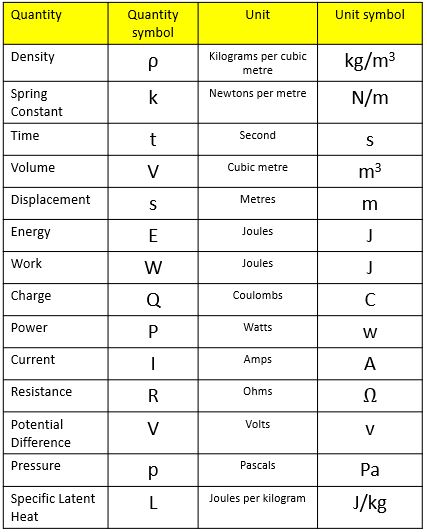Learning a language means learning vocabulary. Physics uses a vocabulary of quantities which need to be memorised in the same way.
Last weekend I took my daughter to the supermarket in the car. As I pulled away she said “I bet you like the v minus u over t of this car don’t you?” It took me about 2 seconds of delta v over a to work out what she meant, and at the same force times perpendicular distance, I realised that she may have come up with a great way to learn the GCSE Physics formulae.
So what am I talking about?
v minus u over t = acceleration
delta v over a = time
force times perpendicular distance = moment
Now read the initial paragraph again.
So, what’s the point? Physics is a science which has quite a few mathematical equations to describe the relationships between different quantities. Not only do students need to learn and understand the theory of physics – of how various aspects of the world around us behave, they also need to learn and remember the many equations which show the relationships between these various aspects of the world. From the student’s point of view, learning the physics theory would be much easier if they already knew or at least recognised the mathematical equations.
The same is true when learning new languages. When learning a language we often start by knowing and remembering a few nouns (car, dog, girl, phone, etc) before we start to put them together into short sentences with a few simple verbs (The dog drives the car, The girl breaks the phone, etc). Imagine trying to do this the other way round. you wouldn’t be able to. Learning the nouns and verbs at the same time would create too much to learn at once. So the most efficient way is the learn the nouns first, then learn the relationships between them. Even young babies do this, as those of you with very young children in the house know only too well.
So, how can we apply the language learning technique to the Physics?
First, students could learn the many different quantities studied in Physics. These are the nouns. They wouldn’t need to know how they relate to each other at first (just as a 1 year old doesn’t need to know how a TV works to be able to point at it and say “telly”).
The quantities needed in GCSE Physics are shown below with their symbols and units.


So that’s the first task – learn these quantities, their symbols and their units.
In order to help with this I’ve created an open DECKS group which anyone can join. Within this there is a course called Physics Quantities & Units which will not only teach users the quantities, units and symbols used in Physics, but will also test knowledge and allow students to compete with each other. Give it a go and see how you get on.

Next, students will need to learn the equations.
The exam boards kindly provide a list of all the equations students need to know and use, and those they need to be able to use but that will be given to them in the exam itself.
I’ve gathered these together from the three main exam boards and I offer them here for anyone to download as a PDF for free.
So, now they have them, how are students going to remember them?
I have 4 effective suggestions:
- Produce a series of flashcards using these instructions.

- Practice using them by answering plenty of practice questions.
- I have gathered together all of the past papers from the three main exam boards. The mark schemes are also there to check all work.
- Find them all here: Past GCSE Papers on Plutonium Science
- Use another DECKS course that I have on my open group.
- This course is called New GCSE Science Equations. It will remind students of the equations then test them as they work through the course.

- Students could get together with some like-minded friends and whenever they use word “time” or “energy” or any of the other Physics quantities in their everyday speech, replace it with its equation as my daughter did last weekend. It could be fun!
Please remember that nobody learned anything without a bit of effort and practice. This isn’t going to be quick, it may not be particularly easy, but it is possible. Just as we all learned how to talk, read, play Fortnite or any of the other things we do – We can all learn to do this.
Once students have learned all the Physics Equations and committed them to memory, learning the theory behind them will be much easier when they come to do it in school.
One more thing: Follow my Twitter page (@Pu94Science) to receive all of the useful hints, tips and general Science content that I publish.
Good luck.
Pu.

Hey there! Would you mind if I share your blog with my facebook group? There’s a lot of folks that I think would really enjoy your content. Please let me know. Thanks
LikeLike
I don’t mind at all. Thanks for your comment.
LikeLike